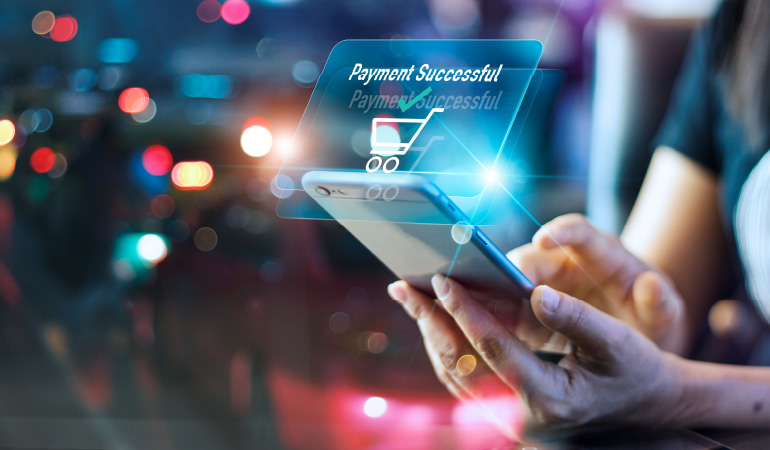The Future of Automated Payments – Trends and Innovations to Watch

Changing payment methods are redefining traditional payment processes. These include a shift away from physical money and innovations such as automation, blockchain technology, and store payments.
Using automated processes helps reduce AP errors like duplicate payments, which can damage supplier relationships and waste time and resources. It also captures more discounts by streamlining payment processing timelines, allowing organizations to forecast cash flow.
Artificial Intelligence
AI, Machine Learning (ML), Deep Learning (DL), and Big Data will help automated payments processing and bring efficiency, transparency, and security to the industry. According to PwC, 8 out of 10 entities already use AI and its technologies to reduce manual intervention in their payment processing operations.
One of the most prominent applications of AI in payments is fraud detection. ML algorithms can scan vast numbers of transactions for potential signs of fraud, allowing them to spot anomalies that human employees might not. However, a robust understanding of regulatory frameworks and compliance standards will be vital in using this technology in the payment sector.
ML can also be used for intelligent customer service, with chatbots conversing with customers to answer simple queries and narrow searches before handing them over to a human representative for more complex issues. Implementing this approach saves on employee resources, enhances the customer experience, and fosters trust.
The banking industry also uses AI to make loan approvals quicker and easier. ML is helping lenders get a more precise picture of a potential borrower’s creditworthiness, identifying risk factors that might be hidden in a standard FICO score. It can help banks offer more competitive rates and speed up the time for SMEs to receive funding.
Machine Learning
Leveraging the power of machine learning, a key component of AI presents a remarkably efficient approach to scrutinizing vast amounts of data and enhancing the streamlining of payment procedures. It is a tool with a long history in academia and supercomputing, but its broad applications are now opening up to businesses as the global economy becomes more digital.
Companies can use machine learning to automate matching invoices with payments, a vital part of the payment reconciliation process. Machine learning has become a game-changer for companies seeking to optimize their operations and minimize costs. By utilizing this technology, businesses can streamline payment processing while guaranteeing accuracy. Moreover, machine learning is a valuable tool for preventing fraudulent activities, providing companies with an added layer of security. By analyzing large amounts of transaction data, machine learning can detect patterns and anomalies that may indicate suspicious activity. It can also identify new types of transactions that haven’t been seen before, reducing the need for human intervention in detecting fraudulent activities.
The software compares the payment data against a set of rules that define normal payment behavior for a specific client company. If the software detects an outlier, it can alert a human employee to investigate. This solution can significantly reduce the number of erroneous notifications, resulting in amplified efficiency and decreased costs. The resulting efficiency gains could significantly affect the business-to-business (B2B) payments market, worth $125trn as of 2019.
Contactless Payments
If you provide goods and services, embracing the latest consumer trends is critical to keeping your customers happy. But every business owner has to decide whether a new technology is just a fad or worthy of investment.
Contactless payments are a great example of innovation already here and poised to continue growing. These contactless payments use NFC, a form of RFID technology, to allow customers to make transactions by hovering their card or mobile phone near a point-of-sale (POS) terminal, and the transaction processes instantly without even requiring a PIN. It makes for a much faster and more streamlined customer experience.
Furthermore, the technology is far more secure than traditional magstripe cards. Magstripes carry static information that fraudsters can easily copy, allowing them to drain customers’ accounts with fraudulent purchases. But contactless payments and EMV technologies (which also provide enhanced security by encrypting data) use dynamic codes that are unique to each transaction. It makes it impossible for thieves to clone a credit or debit card and reuse it to make more fraudulent purchases.
As transit systems continue to recover post-pandemic, riders are shifting their expectations about how they pay for transportation services to a digital direction, and contactless payments are the ideal solution. While this shift may be accelerating, it’s important to remember that cash is still king for many demographics.
Blockchain
The blockchain, the decentralized ledger that underpins Bitcoin and other cryptocurrencies, has many potential applications, including for B2B payments. The technology allows for secure, efficient transactions by removing the need for a central authority. It also reduces transaction fees and is a safe way to record, store, and transfer data. Hospitals have already used the technology to improve medical records and agribusiness firms for logistical purposes. It has also been used to verify and authenticate digital art pieces, allowing them to be traded and sold on an open marketplace.
Payments infrastructure companies are advancing this concept with their solutions.
Other payment players are creating multi-function instruments that combine traditional wallets’ functionality with a chip card’s security and speed. They can be swiped, scanned, or even voice-activated, with users only having to confirm their identity once or twice. These products can be linked to accounts payable automation (APA) to enable companies to make automated purchases while reducing administrative tasks and accelerating cash flow. In addition, they can help reduce carbon footprint by allowing businesses to purchase from sustainable suppliers.



